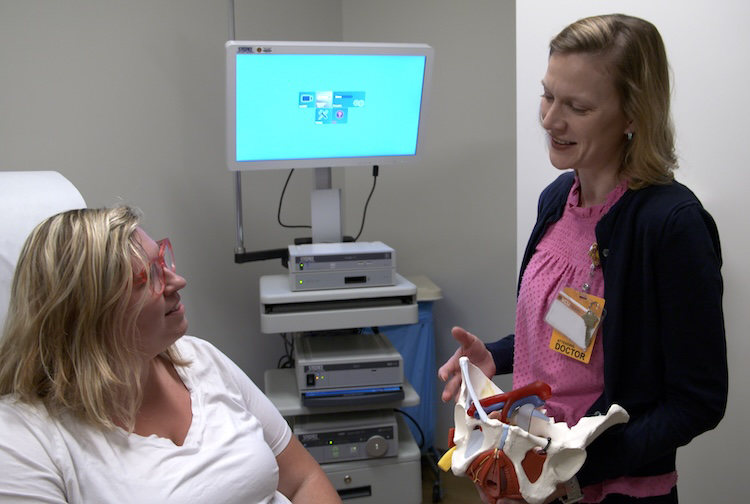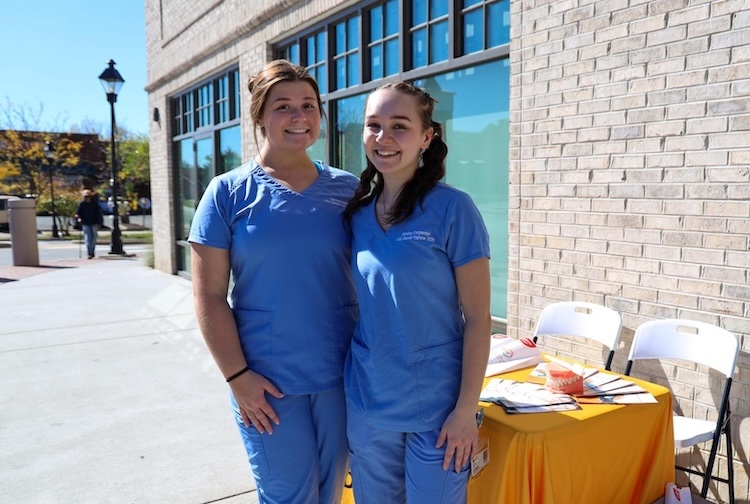Take back control: Your guide to managing an overactive bladder
VCU Health female pelvic health specialists want to help you get back to doing what you love – without as many bathroom breaks.
October 29, 2025 VCU Health urogynecologist Linda Burkett, M.D., MSc, is currently researching the connection between the bladder and brain. (Taylor MacKillop, Enterprise Marketing and Communications)
VCU Health urogynecologist Linda Burkett, M.D., MSc, is currently researching the connection between the bladder and brain. (Taylor MacKillop, Enterprise Marketing and Communications)
By Joan Tupponce
How do you pick the perfect seat in the movie theater or table at a restaurant? Having a clear route to the closest bathroom is an important part of that decision for millions of people in the United States.
From losing sleep to being nervous about travelling long distances – living with an overactive bladder can affect your quality of life in so many ways. As someone who cares for patients with pelvic floor disorders, such as an overactive bladder, VCU Health urogynecologist Linda Burkett, M.D., MSc, wants to help her patients take back control of their routine.
 Linda Burkett, M.D., MSc, is a urogynecologist at VCU Health. (Tom Kojcsich, Enterprise Marketing and Communications)
Linda Burkett, M.D., MSc, is a urogynecologist at VCU Health. (Tom Kojcsich, Enterprise Marketing and Communications)
As an avid researcher in the Department of Obstetrics & Gynecology at Virginia Commonwealth University’s School of Medicine, Burkett is currently working on a study to better understand the connection between the bladder and brain. She hopes to identify some of the neurological factors directly causing people to develop overactive bladders.
“The long-term goal is to create a test that can provide predictive information about what types of treatments may be most effective for restoring normal bladder activity,” Burkett said
Burkett spoke with VCU Health News about the symptoms of this common condition and what can be done to improve them so you can get back to living your life – confidently and comfortably.
What is an overactive bladder?
Overactive bladder is a common condition that affects up to 30% of men and 40% women, but it’s more common as you age. It’s a kind of overactivity or spasm of the bladder muscle, which causes sudden urges to urinate that may be hard to control.
The bladder is a big balloon and the outside of it is a muscle, and that muscle contracts at the wrong time. It should only contract when you’re in the bathroom and you give permission to go.
What are the symptoms of an overactive bladder?
Common symptoms of having an overactive bladder include:
- Increased frequency of going to the bathroom (more than seven or eight times in waking hours)
- A strong urge to pee even when your bladder isn’t really full.
- Waking up at night more than once to go to the bathroom.
- Urine leaks.
How many times a day is considered normal for urinating? What is considered “increased frequency”?
On average, most people pee about seven or eight times a day. We consider having an increased frequency as going more than eight times in waking hours and more than once overnight.
Is overactive bladder more common for a specific age group?
Overactive bladders do get more common as we age. I think we generally see it most often as women go through perimenopause and beyond, but it doesn’t necessarily happen just to older women. I have a population of college kids that I treat for it.
Is this a condition that suddenly appears or one that gradually gets worse?
Generally, people start to notice they are the person who always wants to stop for a bathroom break or they get to the point where it bothers them at night. That point is different for different people.
Some people are fine with going to the bathroom every hour because they’re mostly home, and it doesn’t bother them. When they start leaking, that may be their pressure point. Some have a job where they can’t go to the bathroom every hour, and it starts to make their life a little harder.
What are the treatments for an overactive bladder?
The good news is that it is treatable, and we offer a wide range of options to fit your life and goals. There are three main treatments we use for an overactive bladder: behavioral, medications and medical procedures.
- Behavioral treatments are more exercise-based. They include healthy weight management and avoiding food and drinks that can irritate the bladder, such as caffeine, alcohol and artificial sweeteners, to name a few. This approach also looks at total fluid management (how much fluid you drink in a day and stopping fluid before bedtime) as well as core and pelvic floor therapy, whether at home or with a physical therapist.
- Medications are typically taken once or twice a day. They target the receptors in the bladder muscle to help with issues like urgency and frequency. These medications have fewer side effects and are typically my first choice for treatment.
- Medical procedures include non-invasive, outpatient treatments and inpatient surgeries. For example, one outpatient procedure we perform is bladder Botox, where we inject Botox into the bladder to reduce involuntary bladder contractions. Another minimally invasive procedure is where we implant a device that sends mild electrical pulse, like a pacemaker, to improve communication between the bladder and brain and improve overactive bladder symptoms.
A combination of treatment strategies may be the best approach for you. Our goal is to help you feel empowered to make the best decisions for your lifestyle. By having most advanced technologies, innovative treatments and latest research readily available at our university-based health system, we can talk through a variety of different approaches to create a personalized treatment plan that works for your individual needs.




